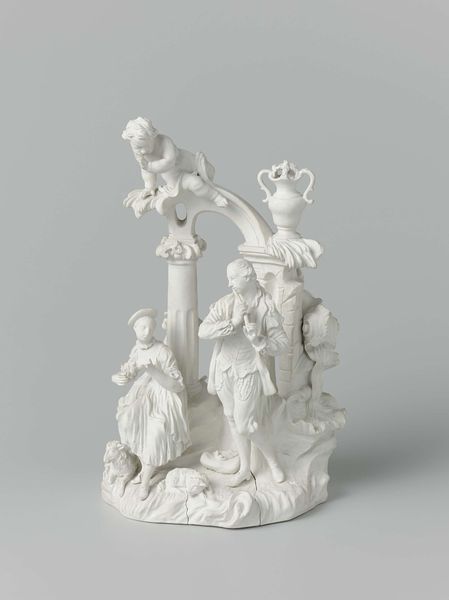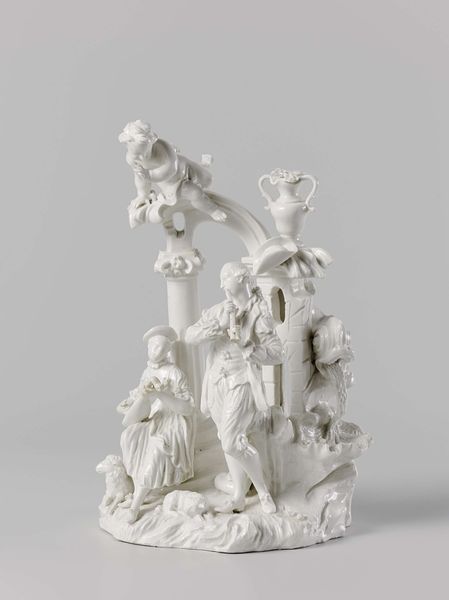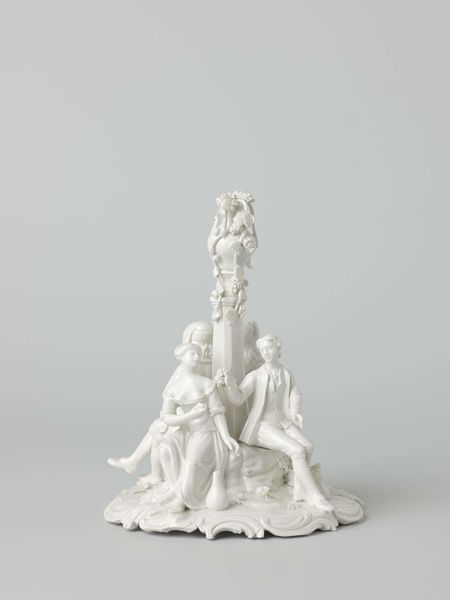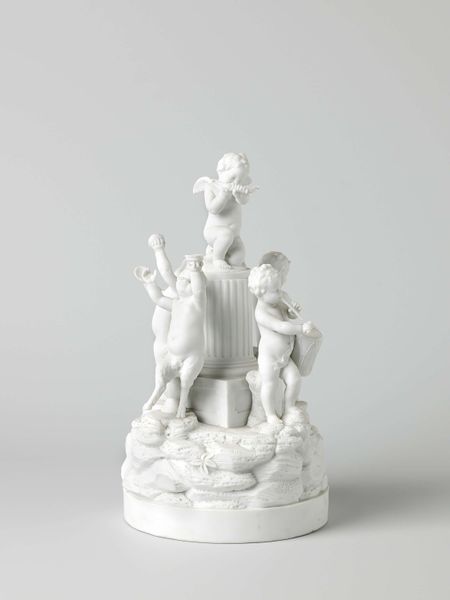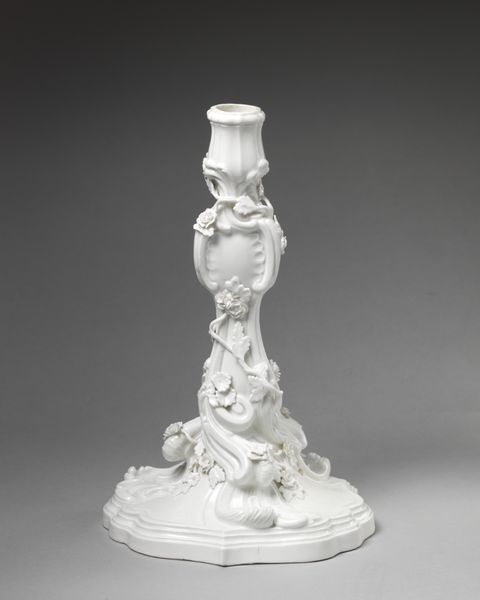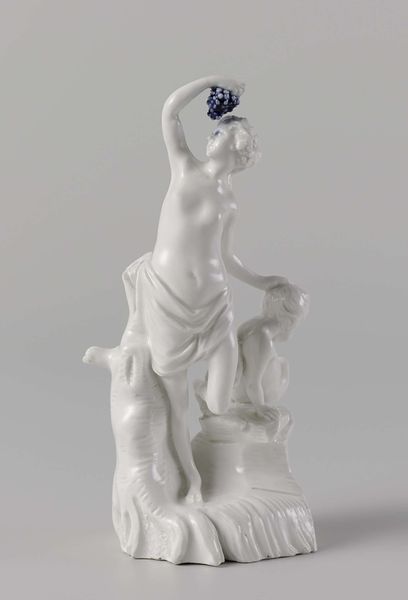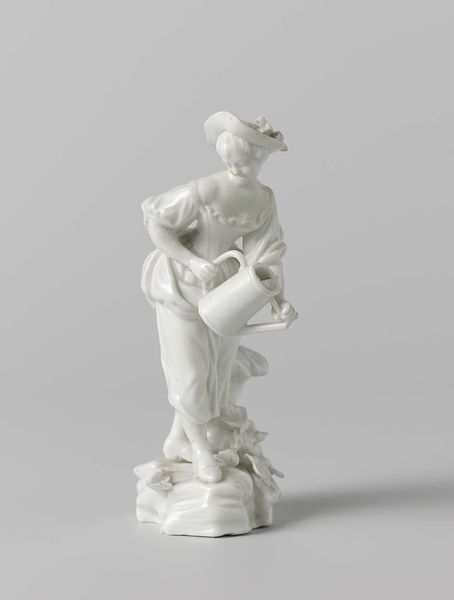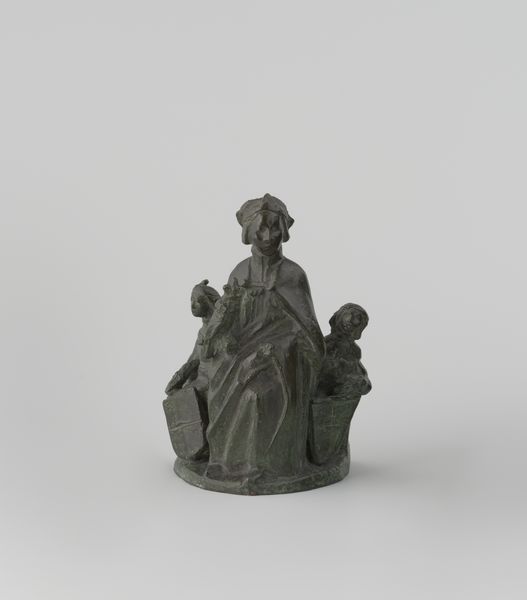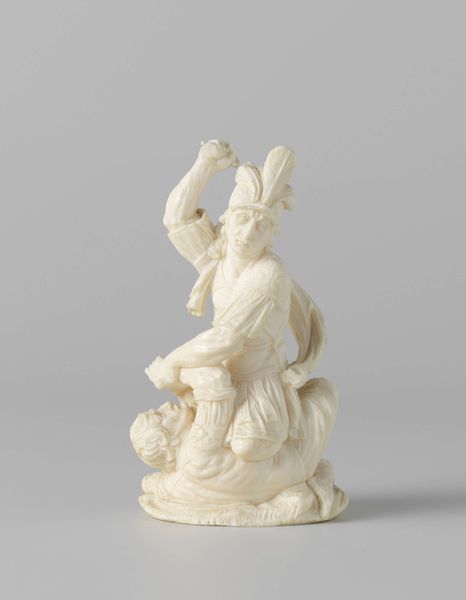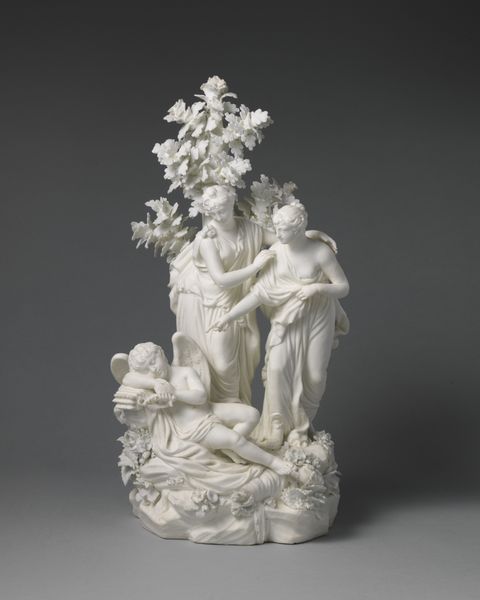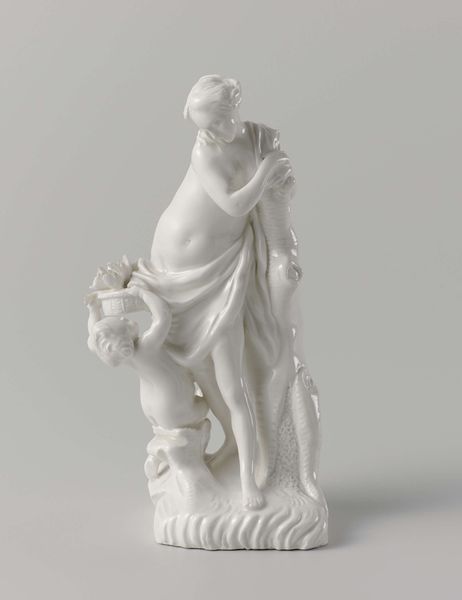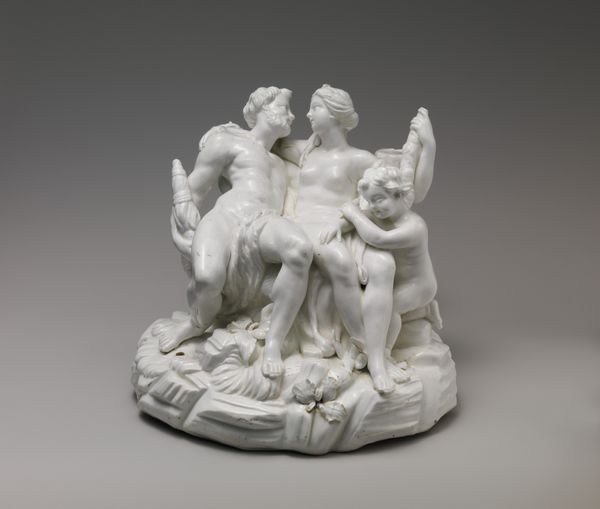
Dimensions: height 39.5 cm, width 27.2 cm, depth 21.1 cm, width 27.2 cm, depth 21.1 cm
Copyright: Rijks Museum: Open Domain
Editor: This captivating ceramic sculpture, "Allegorical Group," made in Loosdrecht around 1782-1784, immediately struck me with its intricate detail despite its small size. What aspects stand out to you when you examine it? Curator: I'm drawn to the materiality of this piece. The pristine white ceramic, its origins rooted in the Dutch Republic's attempts to emulate Chinese porcelain, speaks volumes about trade and aspiration. How does this "allegorical group" use a material so steeped in socioeconomic meaning? Editor: That's interesting! I hadn’t considered the implications of the ceramic itself. So, you see the material choice as inherently linked to the piece's overall meaning? Curator: Absolutely. Porcelain wasn’t merely decorative; it was a symbol of wealth, technological prowess, and global commerce. The labour required to produce a piece like this, even on a miniature scale, should not be ignored. What kind of socio-political message were Loosdrecht trying to transmit through this "allegorical group?" Do you think it has something to do with class or politics? Editor: Hmm, I suppose the figures’ clothing, representing different social classes, are further proof of the intricate dance of wealth, art, and class! It is a clever and thoughtful method for communicating at a high level. It also seems subversive in how the artist manages to hide the message. Curator: Exactly. It gives insight into the social dynamics and artistic movements happening then, a confluence of material culture and artistic representation. Editor: That changes everything about how I view this piece. I now see it as less of a mere decorative object and more of a narrative. Curator: Indeed, considering material and production invites us to unravel these rich stories embedded in seemingly simple forms.
Comments
rijksmuseum about 2 years ago
⋮
An elegantly dressed gentleman pays an old beggar woman to have his shoes polished by her son. His favourite pastime is symbolized by the statue of Diana, goddess of the hunt. The social theme depicted here was quite unusual for a porcelain figure group.
Join the conversation
Join millions of artists and users on Artera today and experience the ultimate creative platform.
